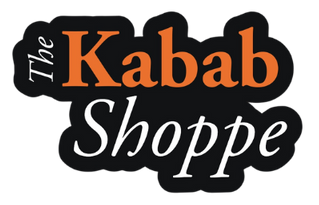
How Middle Eastern Cuisine Became Part of the North American Palette
Middle Eastern cuisine has become increasingly popular in North America, shifting from a niche offering to a cherished staple in many communities. Let us take you through the journey of Middle Eastern flavours, ingredients, and cooking techniques that have won over the palates of Canadians, contributing to the rise of Halal restaurants and culinary fusion.
Historical Roots of Middle Eastern Cuisine
The history of Middle Eastern cuisine dates back thousands of years, shaped by various cultures, empires, and trade routes. Ingredients such as spices, grains, and legumes were essential to the region’s culinary identity. The Silk Road played a significant role in the exchange of flavors and cooking techniques, paving the way for what we now know as Middle Eastern cuisine.
As immigrants from Middle Eastern countries settled in North America throughout the 20th century, they brought their culinary traditions with them. Cities like New York, Los Angeles, and Toronto became melting pots for diverse ethnic foods, where Middle Eastern restaurants began to flourish.
The Rise of Halal Restaurants
The growing awareness of dietary restrictions and preferences has led to the rise of Halal restaurants in North America. Halal, which means “permissible” in Arabic, refers to food that adheres to Islamic dietary laws. As the Muslim population in North America increased, so did the demand for Halal options, which often include Middle Eastern dishes.
Halal restaurants have introduced a wider audience to the rich flavors of Middle Eastern cuisine. Dishes such as kebabs, shawarma, and falafel have become household names, often featured in food trucks, casual dining spots, and upscale restaurants alike. The accessibility of these dishes has made Middle Eastern flavors more mainstream, appealing to diverse palates.
Fusion and Adaptation
Middle Eastern cuisine has not only maintained its traditional roots but has also adapted to local tastes. Fusion cuisine has emerged as a way to integrate Middle Eastern flavors into North American favorites. For instance, Middle Eastern spices are now being used in burgers, tacos, and even pizzas, creating a unique culinary experience.
Restaurants have also started to offer build-your-own bowls and platters, allowing diners to customize their meals with various proteins, bases, and sauces. This interactive dining experience resonates well with North American consumers, who appreciate the ability to tailor their meals to their preferences.
Ingredients and Flavors
The ingredients that define Middle Eastern cuisine are rich and varied. Common staples include chickpeas, lentils, rice, and various spices like cumin, coriander, and sumac. Fresh herbs, such as parsley and mint, add brightness to many dishes, while yogurt and tahini provide creamy textures and flavors.
The emphasis on fresh, wholesome ingredients aligns well with the growing trend toward healthier eating in North America. This has led to an increased interest in plant-based options, such as falafel and grilled vegetable dishes, making Middle Eastern cuisine an appealing choice for health-conscious diners.
A Culinary Journey at The Kabab Shoppe
The journey of Middle Eastern cuisine to North America has been a fascinating one, marked by cultural exchange, adaptation, and a growing appreciation for its rich flavors and ingredients. Halal restaurants have played a crucial role in this evolution, making Middle Eastern dishes accessible to a broader audience.
If you’re looking to experience the delightful offerings of Middle Eastern cuisine, The Kabab Shoppe is an excellent choice. With a diverse menu that includes everything from butter chicken and tandoori chicken to delicious wraps and kababs, it’s a culinary adventure waiting to be explored. Whether you’re a long-time fan or a first-timer, we offer a memorable experience that captures the essence of Middle Eastern flavors. Explore our menu now!
